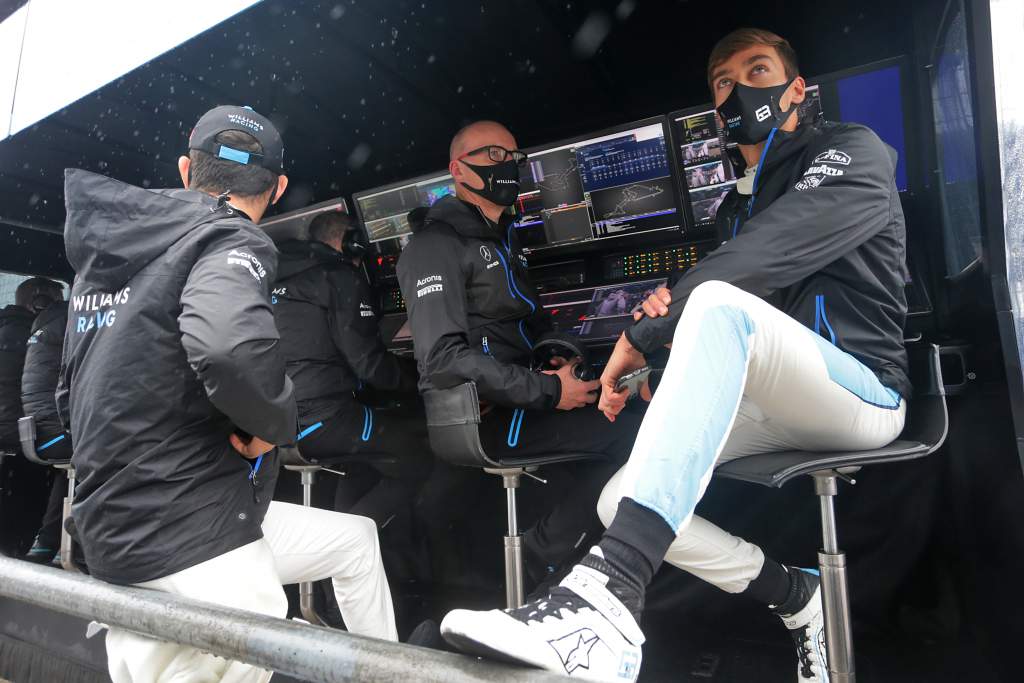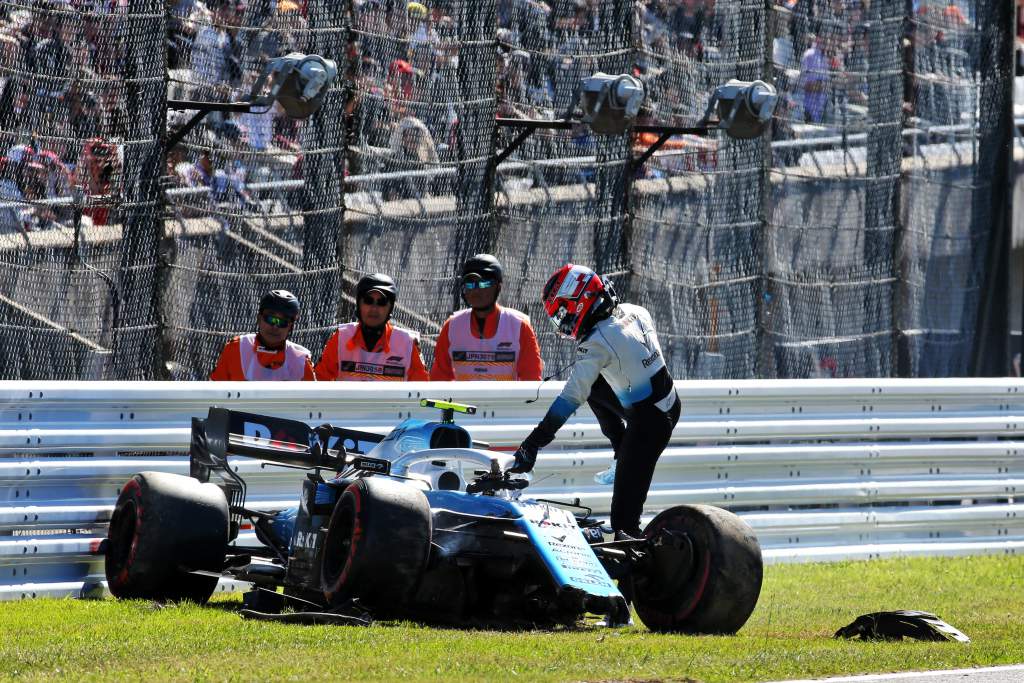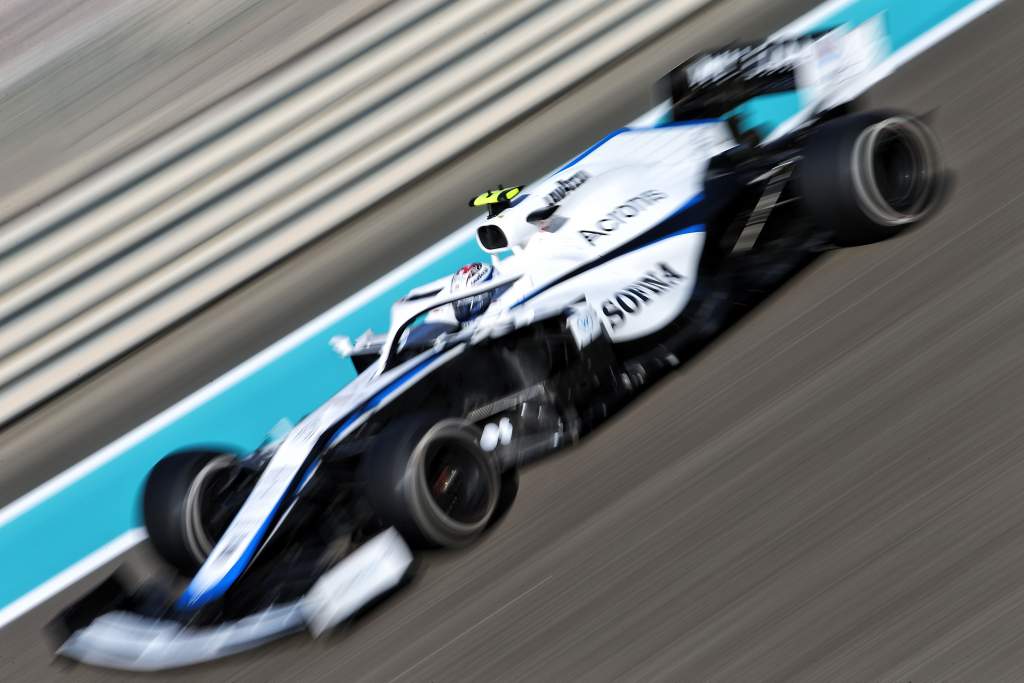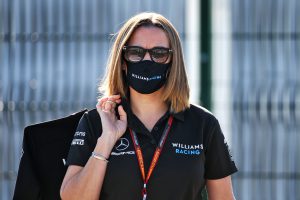Up Next

The Williams Formula 1 team’s long-term strategy will mix the cultural improvements identified by former boss Claire Williams with investment from new owner Dorilton Capital that has already started.
Three months have passed since Dorilton purchased Williams and the founding family departed the team, with Simon Roberts installed as acting team principal.
The initial outline of the Dorilton strategy was to prioritise long-term performance and be ready for the arrival of F1’s new technical regulations in 2022, while evaluating how to deploy newly available cash in the short-term.
Roberts remains acting team principal only, while the men behind the new management team – directors Matthew Savage, James Matthews and Darren Fultz – have kept a low profile.
And there are no obvious manifestations of Dorilton’s investment with the 2020 car, which means on the surface little appears to have changed.
However, the next phase of the long-term plan, what might be termed the first ‘active’ phase given it moves beyond evaluation and the initial cash injection of £42.5million to clear Williams’s debts, has already begun.
“We want to make sure we’re caring and kind to all the people that work for us, and we want to just do all the right things” :: Simon Roberts
In late November, a further £5m was invested for working capital purposes. This has been the obvious weapon missing for Williams in recent years although an important change instigated under Claire Williams’s leadership will also play a big part in the short and long-term.
Asked by The Race about the direction Claire had identified and the initial areas of change under Dorilton’s ownership, Roberts said on Friday in Abu Dhabi: “From the cultural fit with the team, there’s a lot of synergy between the roadmap that Claire had laid out [and Williams’s plan]. And we’re staying very true to that.

“We want to be a great place to work. We want to make sure we’re caring and kind to all the people that work for us, and we want to just do all the right things.
“In terms of the technology though, we now have the opportunity to invest and that’s what we’re doing. That’s started already.
“There’s not much impact of that on the car we’re racing now but we’ll start to see that next year.
“This is part of a long-term strategy, and that will build slowly over the next five years.
“The main thing is we want to invest wisely. We don’t want to make mistakes.
“We want to play for the long game, and that’s what we’re doing.”
The culture of working at Williams was something that had been under review since early last year, after the significant disappointment of 2018 had given way to an abysmal 2019 car.

A lot of the changes were made as a result, improving planning and production processes to address the difference between where Williams had fallen to and the requirements of a modern, successful F1 team.
That process was therefore under way long before Dorilton’s arrival, which is partly why Williams was able to progress from an average performance deficit of 4.3% last year to 2.8% in 2020.
And it is now being supported by investment, which broadly means the way of working will stay the same but the tools the team has to use are better. And that is very valuable in the long-term.
Williams will not disclose a running commentary of everything Dorilton is investing in, but the money is there, and it is being used to refurbish or replace existing infrastructure where required throughout the factory.
“We need to make sure, if we’re making chassis, we’re really good at making our chassis” :: Simon Roberts
There are two benefits to starting this process as quickly as possible: it completes factory upgrades before next year’s cost cap, which Williams wants to operate close to, and it gives the team an improved working environment sooner.
It’s possible this has already resulted in marginal gains in Williams’s turnaround of parts in the closing stages of the 2020 season but nothing that seems tangible on-track.
Improving the factory is about long-term benefits though and it’s something that Williams will hope to reap initial rewards from with its design and production work within its 2021 aerodynamic development, and then of course more significantly in 2022.
Another aspect that Williams is pursuing in its new era is an assessment of development efficiency.
The team has long publicly professed its aversion to becoming a ‘B team’ for a bigger squad and sacrificing its independence. Williams is not going to suddenly work hand-in-glove with Mercedes, buying all it can within the rules, but under Dorilton, as it adapts to the realities and restrictions of modern F1 for a small team, building everything itself will be an easier process than before.

“We can see advantages [of closer cooperation], but we don’t want to become a B team,” said Roberts.
“So, we want to retain independence, but we want to be more competitive.
“We’re open to extending our relationship but the specification of that will depend on what we think we’re strong at internally, and where we think we need help and support.
“In simple terms, if we’re good at something, and we can do it quicker to the market, quicker to the track, we should focus on that.
“If there’s something we can’t do very well, then we should be prepared to go and buy that from whoever’s got it available.
“Under the cost cap you can’t afford to be inefficient and that’s what we’re focusing on.
“We need to make sure, if we’re making chassis, we’re really good at making our chassis. And we apply that to everything in the car.
“We are an independent, we’re going to remain independent, but there is scope for collaboration.”
The long-term plan sounds sensible but Williams needs a team boss to guide it. Continuing with Roberts, who has overseen the start of the new era so far, seems the best way to maintain that continuity and minimise disruption.
“We’re working on that right now but I can’t say anything about it this weekend,” said Roberts when asked by The Race about a decision on the team’s leadership.
“The situation is normal, lots of discussion with Dorilton, and when we’re ready we’ll be able to announce how we intend to move forward.”







